

Cotton is a common fabric in dressmaking for various reasons. The different varieties in the market come in a range of textures ranging from light to heavyweight alternatives. The various types of cotton fabric we have today feature different construction to make each of them unique. The use of cotton dates back to approximately 5500 BC, with South Asia being among the first regions to exploit the numerous benefits of this type of fabric.
The growth of cotton spread to other parts of the world gradually as subsequent human civilizations became aware of its existence and the uses of the fabric. Currently, the production of cotton stands at twenty-five million tonnes, and this caters to the needs of different industries that utilize this fabric in their day-to-day operations. India is the largest producer of cotton globally, producing both organic and hybrid alternatives of the same. Herein we discuss the process of making cotton, its uses, and the different varieties available.

Processing cotton is one of the tasking phases of production. Back in the day Trusted Source What Is Cotton? A Complete Guide to the History, Characteristics, and Uses of Cotton Cotton is a staple textile of the fashion industry. Every closet probably houses a large percentage of cotton items, be it plain cotton, dyed cotton, or cotton mix. Cotton is a natural fiber derived from cotton plants whose use dates back to the fifth millennium B.C. www.masterclass.com , cotton was handpicked and separated by laborers. Currently, there are different machines that farmers use to harvest the crop. A cotton picker picks the entire plant while a stripper harvests the boll only. After harvesting, the cotton bolls are sent to the gin. Cotton gins are the factories that handle the first phase in the processing of the bolls.
Ginning is the name of this preliminary processing that the bolls undergo. The bolls are dried to achieve the 5% moisture necessary for the subsequent steps. Once the level is at the standard required, the cotton goes through a cleaning process that removes all unwanted elements such as sticks, dirt, and leaf trash. When the cotton is clean, it goes for separation in the gin stand, where lint is separated from the seeds.
The saw gins pull the cotton into small fibers and force them through a narrow slot. The raw fiber at this stage is called lint, and it goes through a series of pipes where it is pressed into bales. This prepares the lint for transportation into the next production stage, which may be at the same facility or a different one. Seed, lint, and foreign matter. All the by-products of the phase have been used, and nothing is thrown away.
Classing is the next step that the cotton must undergo before it goes spinning. Samples from each bale are taking for tests to determine the quality of the cotton. Once this is done, the lint is ready for spinning. This is the process that converts the lint into yarn. It starts with carding, where the lint is cleaned again and converted into long untwisted ropes in readiness for spinning. There are three spinning methods that cotton manufacturers use to process the lint into yarn.
Ring, rotor, and air jest spinning are the three types that they use. The modern spinning frames take the fibers and rotate them at high speed, turning them into yarn. The yarn is loaded on smaller bobbins to facilitate the transfer to the larger ones, commonly referred to as cheese cones. After this process is done, the yarn is ready for conversion into fabric through weaving or knitting.
Cotton has numerous uses in different industries. Its applications are numerous due to the availability of different varieties of cotton. Also, this material is among the inexpensive ones with many desirable qualities. Here are some of the common uses of cotton.

Cotton is among the materials that fishnet manufacturers use to make their products. Synthetic fibers are slowly taking over cotton in this industry, but some people still prefer to use the cotton variations of the nets. Other than fishing nets, other gear necessary for this type of task is made from cotton. People who are allergic to synthetic fabrics have other options they can use, and cotton is the top choice for such individuals for different reasons.
Yarn from cotton gives rise to numerous varieties of fabric. The method the manufacturer uses determines the quality, among other features of the fabric they make. According to expert’s cotton fabric bundles are appropriate for beginners before they can walk into stores to buy the different varieties available. Here are some of the types of cotton fabric that manufacturers in this realm bring to the market.
This type of cotton has a checkerboard effect due to the layout of the yarn. The pattern derives from a plain weave where two or more warp and yarn filling weave side by side as one yarn. This fabric is common in men’s shirts, but the uses do not stop here. This variety of cotton is best for some household items such as wall hangings and draperies. One can find other uses for basketweave cotton fabric.
The process manufacturers use to produce this type of cotton results in a crackled effect. Wax application is the first step for the processing of this alternative. Not all areas are covered with wax. Once it is dry, the fabric is immersed in the dye, and the wax prevents it from reaching specific areas.
Boiling helps remove the wax leaving the fabric with a mottled effect that enhances the aesthetic value. The common use for batik is in dressmaking and production of household décor.
This cotton fabric variation falls in the lightweight category, and it is an ideal choice for heirloom sewing. Batiste features a plain weave that makes it an appropriate choice for embroidery projects as well as smocking ones. This cotton fabric is named after a renowned French weaver Jean-Batiste. It is made from mercerized cotton, and the process involved in the production phase gives a sheen to the top of the fabric. It’s the perfect cotton fabric variety for hot summer clothes, sheets, and bedding.
Bedford Cord is a cotton fabric type that is named after the town of New Bedford in Massachusetts, which is famous for textile production back in the day. It is a durable fabric in the heavyweight selection with numerous uses. This type of cotton fabric bears a resemblance to corduroy, but they are not the same. The warped face in this corded fabric allows for its use in the making of bottom-weight clothes, especially chino pants.
Bird’s eye is a cotton fabric woven in a miniature diamond pattern with a dot in the center. When one looks closely, the pattern resembles a bird’s eye hence the name. Producers who bring this cotton variation to the market use the dobby loom to achieve the repetitive patterns that make the fabric. This type of fabric is great for burp cloths, kitchen towels, and diaper inserts. It is among the expensive types of cotton present in both virtual and land-based stores.
The surface texture for this kind of cotton is among the unique ones that manufacturers in this realm bring to consumers. The production process includes an exceptional loop transfer method that gives the final product a rope-like look. The overall appearance of this type of cotton is stylish, and the feel against the skin is soft. The cable knit fabric is best for an assortment of applications, including knitwear, dresses, and vests. Common usage of the same is on the cuffs and neckline of garments due to its elastic nature.

Chambray is another cotton fabric that fits in the plain weave category. The colored yarn in the warp contrasts with the white yarn in the weft to give this fabric light blue color. It has a semblance to denim, but it is lighter, and the weaving patterns also differ. This variety of cotton fabric has been around since the mid-1500s, and it is the fabric that led to the coining of the term ‘blue-collar’ since most laborers wore chambray shirts. It is the perfect fabric for spring and summer garments.
Chenille is a resilient and fuzzy cotton fabric that is an appealing choice for cuddly projects. Blankets, bedding, pillows, and upholstery are among the range of items that one can make using this cotton fabric. The French translation for this name is a caterpillar, and the fabric has similar characteristics with a pile extending around the weave. The surface of the chenille has a soft feel to the skin, which is why the applications are around bedding and clothes.
Chino is a strong and hardwearing type of cotton with applications in different sectors, including the military. Manufacturers use the twill weave design that makes the fabric in this category robust for military wear use. The US and British army uniforms have been chino cotton for the longest time. Outside the military, this fabric can make normal day wear with the buyers being assured of many years of service from the pair they purchase. Experts recommend using the best sewing machines to make the different garments with chino to make the process painless.
Chintz is another plain weave fabric with many uses in the contemporary world. This type of cotton has been around since the 16th Century, and it allows for printing on the surface to fit the needs of the consumer. It’s a medium-weight cotton fabric variety with huge, printed designs with the common color being blue. It is the perfect pick for upholstery and curtains within the home due to the qualities it has. It comes with a polished or glazed finish to enhance the overall appearance of the fabric.
This variation of cotton fabric has design features that result in a soft pile of vertical rows. They are arranged in a clear-cut pattern called a wale or a cord. The traditional alternatives of this fabric that dates back to the 18th Century were rough wool. The current corduroy in the market is soft, and it is purely made of cotton. There are different types of corduroy, and one should pick an appropriate alternative for the application. This material is popular in the clothing and upholstery industries, and experts recommend it for various projects.
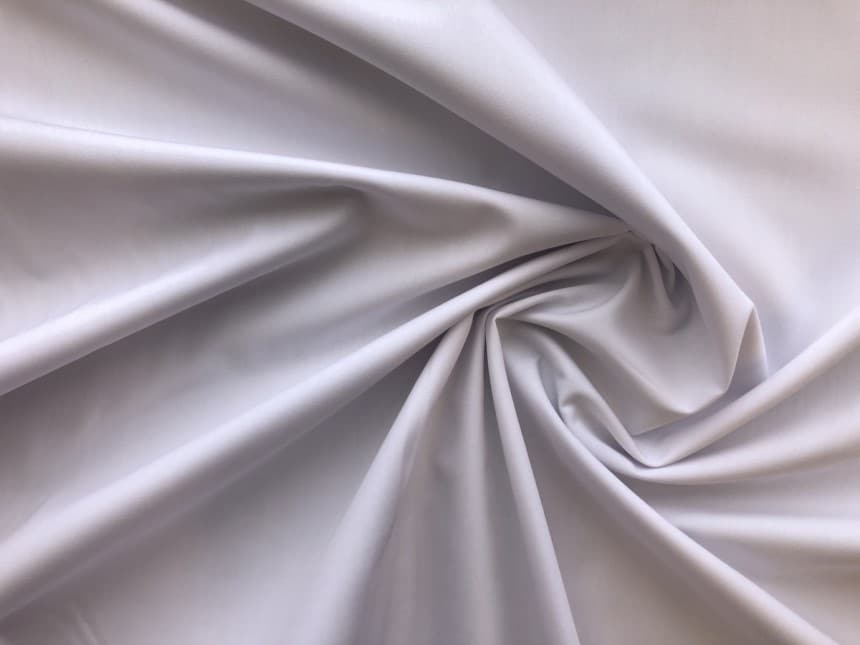
Typically, lace is a fabric made from yarn or thread. What most people are unaware of is that cotton can also make this type of fabric. We have both machine and handmade lace, each with pros and cons that one must weigh to decide the best alternative to buy. Cotton lace has an array of uses in the contemporary world. The applications include making table clothes, wedding gowns, underwear, and camisoles, among other items.
Twill is a plain weave technique that dates back to early human civilization. It is among the prevalent patterns in the cotton fabric industry. The weaving of the pattern results in diagonal lines on the surface of the fabric. Cotton twill yields some of the strongest fabrics in the cotton family. Pants and jeans are the bottom wear that the heavyweight alternative of this variety of cotton makes, and they are ideal for everyday use. Jackets for the cold seasons are also made from cotton twill.
This is another cotton alternative with a French name, crepe. The loose translation of this name is crimped, and this is the true reflection of the fabric with this label. It has a pebbly texture for the surface. The wrinkled and bumping appearance informs the applications of this fabric. There are various techniques that producers employ to achieve the puckered wire mesh feel that is typical of crepe. The fabric is light and airy; thus, the appropriate choice for summer clothes.
Damask is a fabric with intricate patterns and belongs to the woven group of fabrics. The name borrows from the country of origin for this type of cotton fabric, which is Syria. Damascus is the capital of this country where the damask patterns originate. Contrasting luster is what sets this variety of cotton apart from the rest. A combination of weaving techniques such as satin and twill weave help create the luster typical of a damask. The fabric is best for clothes and upholstery.
Denim is one of the common fabrics in the textile industry that a decent percentage of the population knows. Twill weaving is what the manufacturers use to develop the intrinsic patterns that make denim. The fabric is yarn-dyed and mill finished to give this fabric the desirable qualities it has.
Indigo, gray, or white mottled yarn are the common types that producers use to create fabric in this family. Denim is used to make hardwearing clothes.
From the name, you can tell what type of cotton fabric double cloth is. It is a unique type of cotton fabric consisting of two different pieces of cloth held together by yarn. Its common application is in the creation of two-sided clothes, and anyone who has worn or seen irreversible clothing understands what this type of cotton fabric looks like. Other uses include making blankets, draperies, and coats, among other clothing and household textiles. This medium-weight blend has a soft feel.
The drill is among the cotton fabric varieties with a firm weave and diagonal pattern that makes it a robust unit for different uses. It is a hardwearing kind of cotton that allows for its application in the making of uniforms, work clothes, sportswear, and external industrial covers, among others. It is commonly used in the manufacture of khaki, chef coats, military uniform, and other clothes that require heavy-duty fabric. Both medium and heavyweight alternatives of the drill fabric are available in stores.
Wool and synthetic fibers are among the other sources of flannel, but the cotton variations are more popular for the numerous benefits that they offer. Initially, wool was the standard raw material for the production of flannel, but this changed in the 20th Century as more manufacturers choose to utilize cotton for the same. The weave for this type of cotton fabric is loose to ensure that it is smooth, warm, and snug. It is the appropriate choice for winter clothes and also for making plaid shirts.
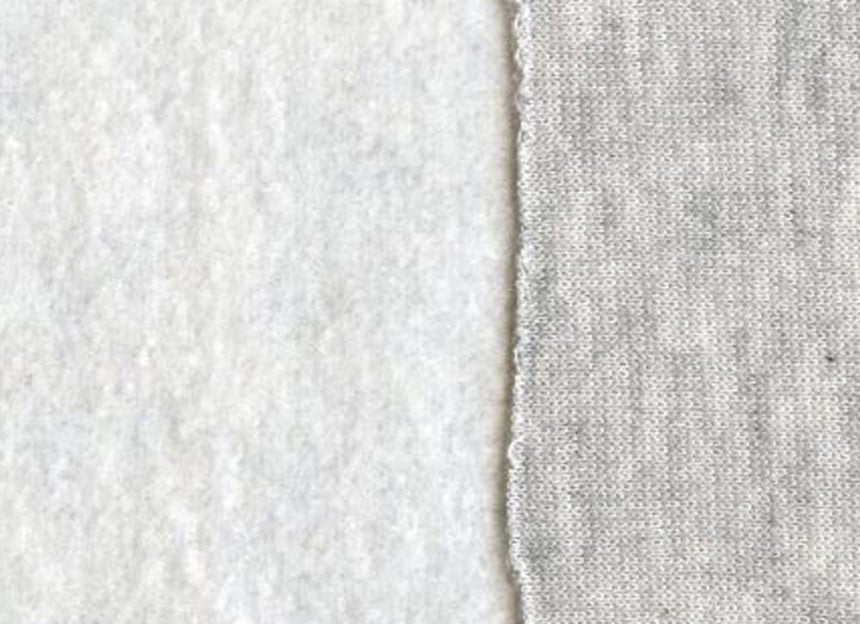
French terry is a cotton fabric with a soft feel to the skin and luxurious texture ideal for loungewear and other types of clothes. Sweatpants, hoodies, pullovers, and shorts are among clothing items made with this selection of cotton. French terry cotton is medium weight to ensure that the wearer of the clothes remains warm without having to wear many or heavy clothes. The construction gives this fabric moisture-wicking capability, among other sought-after qualities. This guarantees the comfort of the user at all times.
Gabardine is a cotton variation with diverse uses. It is a heavy-duty alternative with the ability to resist rain and other harsh environmental factors. The origin of this type of fabric can be traced back to medieval Spain, where it was used to make protective cloaks for the people. It is a cotton fabric with a tight weave that permits the use of the same in the making of suits, overcoats, raincoats, and an array of other protective clothing.
The open weave gives gauze the airy feature, which prompts people to use it for summer clothing and other DIY projects. Gauze is common in most, if not all, homes and workplaces. Most people are familiar with this type of cotton from interacting with the same in a first aid kit box. Most people assume that this variation is for medical applications only, but this is not the case. It’s a thin sheer fabric that one can use to make dresses, blouses, curtains, and other household items.
Manufacturers bring gingham to the market in light and medium weight alternatives. The project that one is working on will determine the best option to buy. It is a plain weave that incorporates white and another color to create the checked or plaid design. From time immemorial, gingham is associated with tablecloths and aprons. Fabric that falls into this family has other uses in the clothing industry. Some people fancy plaid or checked shirts, dresses, and pants.
Heather refers to the interweaving of different colors to produce a greyish shade with specks of color as desired by the manufacturer. Blending different fibers into one yarn helps yield the result of soft mute color. Heather is 100% cotton, easy to clean and maintain as opposed to synthetic variations. It is a multifunctional type of fabric that one can use for making clothes or upholstery.
Herringbone is a weave similar to the twill but reversed after every few rows to create a zig-zag pattern that makes fabrics in this category stand out. The textile can be lightweight for summer clothes and furnishings or heavy in mass to cater to the cold months. The name of this weave is borrowed from the herring fish whose bone structure resembles the weaving pattern in the fabric.
The fishbone pattern stands out and gives dresses, jackets, and suits from the fabric a sophisticated feel.
Houndstooth, also known as the shepherd’s check, is a pattern that goes back many years. The patterns in the fabric bear similarities to a dog’s tooth, and this explains the name houndstooth. This variety originated as a wool cloth in the Scottish Lowlands. Over time, the raw material for the production of this type of fabric shifted to cotton as it is a more sustainable option. Houndstooth uses profound in the cloth-making industry. Dresses, scarves, suits, and skirts are some of the things made using this fabric.
Jacquard is a cotton fabric variety that has intrinsic designs woven into the fibers. It is available in both light, and heavyweight and both alternatives are breathable. The patterns that this type of fabric features is included in the warp using a special machine. This makes it more appealing when compared to fabrics that include patterns that are printed on the surface. The uses of this fabric are mostly in cloth making and upholstery.
This is another cotton fabric variation that is named after the region it was first produced. Jersey knit’s first production was in the Channel island of Jersey in the medieval period. Stretch and softness are the two qualities that make this fabric stand out. Its major application is in the production of t-shirts. Jersey knit is easy to maintain, which also prompts bedding production companies to use it for bed sheets.
The lawn has a high thread count with a plain weave construction that gives it the sheer feeling. It is a crisp and lightweight fabric ideal for summer wear. The crispness of lawn cotton makes it the perfect choice to use in the production of blouses and handkerchiefs. It is a non-slippery fabric that is easy to pin, cut, and sew, making the best choice for beginners in the sewing industry as they can use some of the best sewing kits for a start. Its wrinkle-resistant quality allows garments to maintain shape.
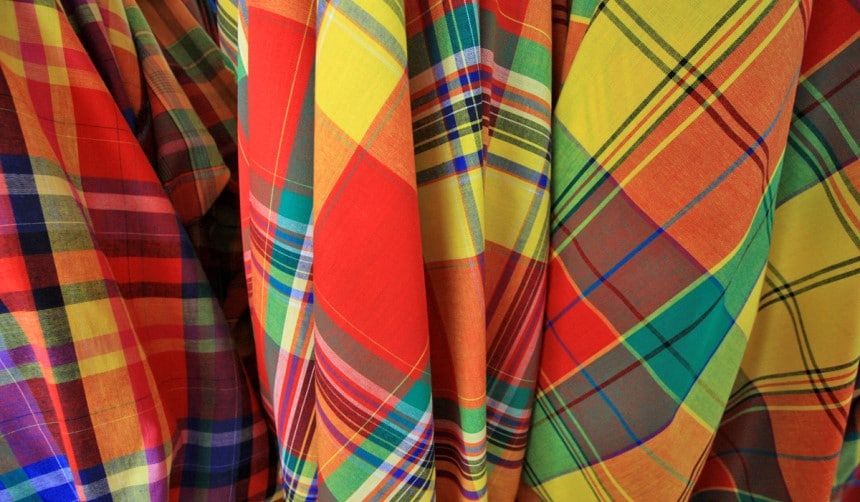
Matelassé is a name borrowed from a French name that means cushion or pad. It is a single-ply fabric with construction that yields a quilted or padded look. The weaving technique is achievable in different ways. It can be handmade, on a jacquard loom, or a quilting machine. The design and weaving technique borrow heavily from the style of hand-stitched quilts from the Marseilles region in France. Bedding and home décor items are the common applications of this fabric.
This is a cotton fabric variety treated with sodium hydroxide and caustic soda. This treatment swells the fibers increasing the fabric’s affinity to dyes. It also enhances the luster giving it a sheen-like finish. The treatment process is a John Mercer invention, and the fabric bears his name. Mercerized cotton is mildew resistant, smooth, and strong, expanding the uses of the fabric by a wide margin. This variation of cotton is among the high-quality options.
Mesh cotton fabric has wide-open spaces, which makes it highly breathable, influencing the use of the same in making sportswear. The wide spaces between the yarns allow this type of fabric to regulate temperature. For this reason, the mesh is popular in summer wear. Most casual wear in the market is from mesh cotton.
The use of mesh is not limited to clothes. Shoe manufacturing companies use this type of fabric as well.
Moisture-wicking refers to a fabric’s ability to move moisture from the inner part of the garment to the outer surface. Moisture-wicking cotton undergoes treatment to achieve this quality. It is the go-to variety for sportswear and exercising clothes as it keeps the body sweat-free, making it possible for the wearer to enjoy the activity they are doing. This type of cotton fabric is 100% natural cotton.
The surface of this cotton fabric is brushed during production, and the end product looks like a mole’s fur. The name is derived from the semblance of the fabric to moleskin. After weaving, the yarns are sheared, creating a soft pile on one side of the fabric. The uses of moleskin are numerous in the cloth-making industry, especially for cold-weather clothes. It is a soft and durable fabric in the heavyweight category. The dense weaving makes some alternatives of this fabric windproof.
Ombre cotton fabric is among varieties with French names. This one means shaded, explaining the look of the textile. Fabric in this category features color degradation from light to dark along the length of the fabric. The first use of such fabric dates back to the 1950s. Currently, ombre cotton fabric has an array of uses in the garment construction realm.
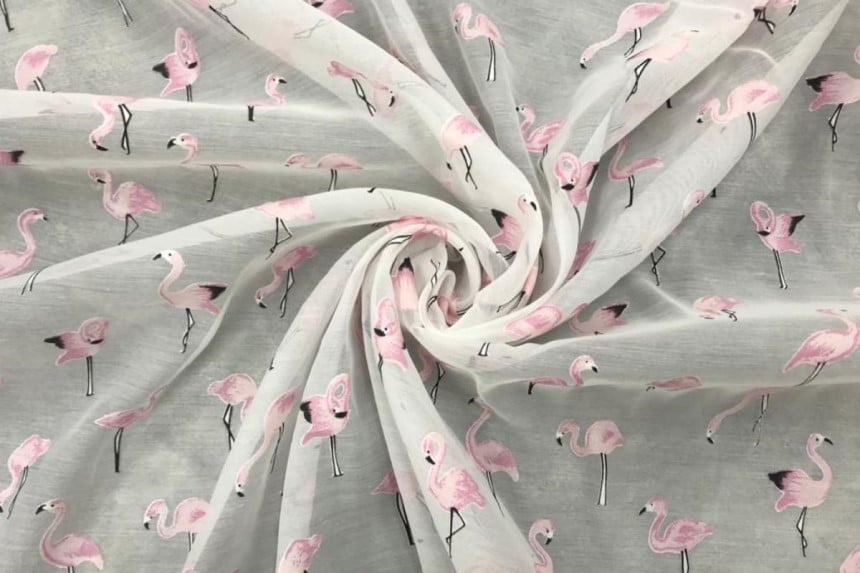
A crosswise rib pattern makes the ottoman cotton fabric. This results in a pronounced corded effect that makes this variation unique. Some ottoman fabrics have small ribs, while others include both wide and narrow cords. Ottoman is stiff and heavy; hence, the best fabric option for cold weather clothes, furniture covers, and trimmings. The soft sheen of this fabric has propelled its popularity in the different industries that use it. Weaving and knitting are the two techniques that are used to make the ottoman.
This type of cotton fabric is named after one of the renowned and oldest universities in the world. It is a wrinkle-resistant fabric with a soft plush feel. Oxford is also breathable and hardwearing, commonly used to make an assortment of clothes. Its most popular use is the making of the classic oxford shirt. The features of this kind of cotton make it ideal for making top-tier dresses, gowns, and shirts, among other things.
Pinstripe is the material commonly used in the making of suits. White or grey lines are weaved into the fabric to create stripes. Even spacing is maintained between the lines to give the fabric an elegant look. Suiting is the common use of this type of cotton, but it has other applications. The lines run vertically down the fabric. The stripes are the size of a pin, thus the name pinstripe. The color of the stripes contrasts with that of the fabric for visibility.
Pique cotton fabric construction features the classic polo knot that yields a honeycomb texture. It is also known as Marcella, appropriate for making dresses, draperies, and children’s clothes. Sportswear and formal clothing are the other garments made with pique. The invention of this type of cotton goes back to the 18th Century. Double cloth weaving with enclosed cord weft is the mechanized technique that producers use in the production of pique fabric.
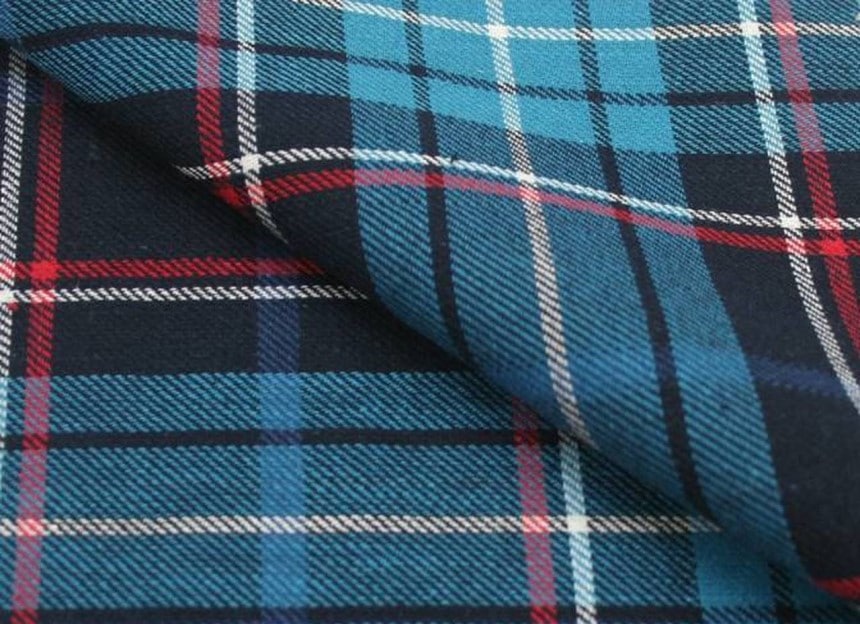
Plain-weave is a common technique in the making of cotton fabrics. A decent percentage of cotton fabric variations feature this type of construction. The weft yarns pass over and under the horizontal ones. This type of weaving results in a simple pattern that is robust. The applications for this kind of cotton fabric ranges from garment construction to draperies and other furnishing items. The fabric is strong, but it is not elastic. Maintenance of fabrics in this selection is easy.
This variation of cotton fabric has a crepe-like appearance. Plissé looks like seersucker without the complex weaving technique. Producers use chemicals to treat the fabric to achieve this effect. The solutions they use shrink part of the fabric resulting in a crinkled texture. It’s a lightweight fabric with a host of applications in the fashion industry. This thin fabric is suitable for warm weather clothes, nightwear, and workout clothes.
Pointelle is a knit fabric with geometric shapes repeated to form patterns. It is similar to lace in the design but differs in other ways. This is among the most delicate cotton varieties available in online and brick-and-mortar shops. Pointelle is an airy fabric that fits in the lightweight category.
It is used to make different types of garments, from children’s clothes to pajamas and sweaters. Weaving and knitting are the techniques producers use to achieve the openwork design.
This plain weave cotton variety is also known as cabinet. Clothing made with poplin is lightweight, airy, and cool. The properties of this fabric make it a good choice for all-weather clothes. Other than clothing, poplin is ideal for decorative use as it has a smooth and lustrous feel. It is a multifunctional variety of cotton that is resilient to external weather conditions. Raincoats are among the clothing that is made using poplin.
Quilting is a cotton fabric with a plain weave and medium weight. The mass differs for the different manufacturers that bring it to the consumers. The textile that fits in this family is mostly used for quilting as the qualities of the fabric allow this process. Beddings and sleepwear are the common items within the home that have the quilting cotton fabric. Other garments can also be made with this type of cotton.
Raw denim is left untouched after the completion of the dyeing and finishing process. It is also referred to as dry denim because it is not washed after dyeing, and it has a natural look. The end result is a stiff and tough fabric that can be sanforized to reduce shrinkage. Sanforazation is not a must; hence there are two types of raw denim in the market. This type of treatment is a 1930 invention that eliminates the shrinking characteristic of cotton.
Knitting is among the techniques that manufacturers use to produce cotton fabrics. The rib knit is stronger than the plain one as it is reinforced by the alternating low and raised rows. The crosswise section of the cotton fabric is elastic, and this informs most of the applications of the rib knit.
Completing garments is the primary use of this type of cotton. Sleeve and neckbands are some of the parts of cloth that rib-knit comes in handy.
Sateen is a weave part that manufacturers use to make heavy cotton fabrics. A yarn goes over three or four others to create a pattern that is smooth and lustrous. The glossy finish of this type of cotton fabric influences the use of the same in household décor items. Sateen is also used to make clothes such as dresses and jackets. Bedsheets made from this material are also popular for the comfort they avail to the user.
Weaving threads at different tensions on a loom is the method that producers use to create this fabric. The name is derived from a Persian phrase that means milk and sugar. This describes the sporadic texture that is typical of seersucker. The surface alternates between smooth and crinkled texture on striped or checkered cotton fabric. Seersucker does not need ironing, and it is best for summer clothes.
Denim has different variations, and selvedge denim is the tightly woven type. It is different from the contemporary type due to the tight weave, which also makes it durable. The pricing for this type of cotton fabric is on the higher side, but it lasts for a longer duration than the others.
A shuttle loom aids in the production of this kind of denim. The incessant cross-yarn weaving and the closed selvedges make fabric superior in quality.
The thermal knit variety of cotton fabric has a honeycomb texture that traps air within the yarn. This construction allows the fabric to keep the user warm, especially in the cold months of the year. Besides clothing, this type of cotton is appropriate for receiving blankets and bedding. Home décor items construction is the other common use of thermal knit fabric.
This variation of cotton is very similar to velvet, but they are not the same. Before the 1970s, the use of this kind of fabric was limited to upholstery. During the 70s, the popularity of velour in garment construction skyrocketed. The soft feel of this fabric allows for its application in the home décor realm as well. The pile knit structure results in loops that are sheared to give this fabric the ornamental gleam.
Velvet is a luxury fabric with numerous uses that has been around since the 8th Century. Baghdad is the country of origin for this fabric. Originally, silk was the only material that was used in the construction of this kind of fabric. Currently, cotton is among the fibers that they use to bring this alternative to the users. Using cotton has helped reduce the cost of purchasing silk significantly. High-end home décor items and clothes are some of the applications of this fabric.
This is a soft and sheer fabric that can be blended with other fabrics to create an array of household items and garments. This is another fabric with a French name.
The veil is the translation of the name voile. The name is from the primary use of this type of fabric, which is making soft furnishings for the home. Lingerie, nightgowns, and dresses are among the garments are made with voile.
Waffle weave is named after the breakfast delicacy it is named after. It is also known as the honeycomb fabric. The weaving technique they use for this alternative produces a 3-D effect with raised threads that form rectangles on the surface of the fabric. This is the material that towel, robes, and blanket manufacturers prefer to use. Weaving and knitting are the two methods that can give the waffle effect to the fabric.
The patterns on this type of cotton resemble the windowpane. Vertical and horizontal lines intersect to outline boxes. Upholstering furniture and garment construction are the two common uses of this type of cotton fabric. Suits, shirts, blazers, and pants are among garments that one will find with this cotton alternative. Windowpane fabric is also good for DIY solutions within the home due to the versatile color choices.
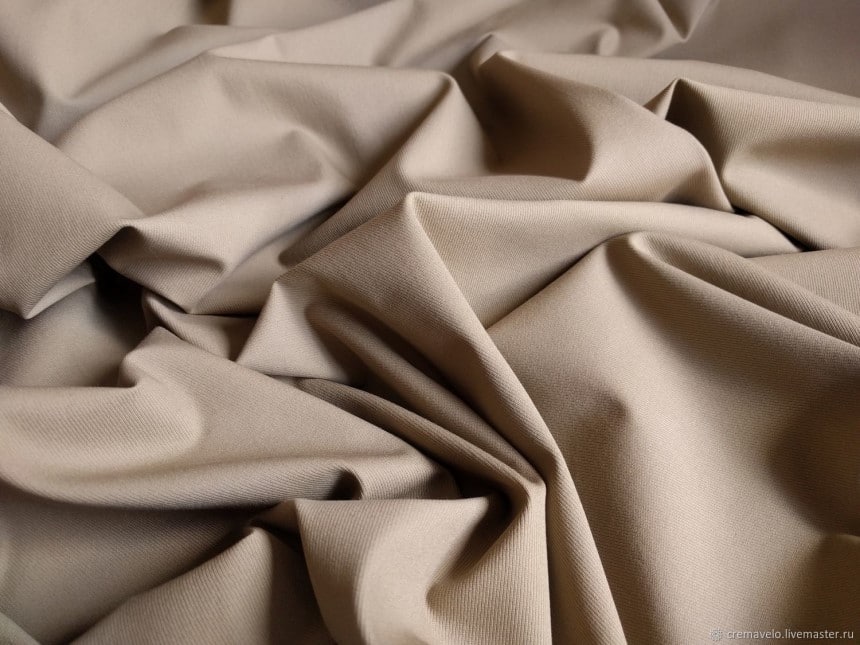
There are many types of the cotton present in the world today, each with unique qualities. When buying fabric, one should familiarize with the characteristics to ensure they pick the right option for the intended purpose. The sewing machine that one has will also determine the ideal fabric to buy. Beginners can start with the cotton alternatives that are easy to cut and pin for an effortless learning experience.
Other than the fabric, sewists need the best sewing table to guarantee comfort as they work. The work surface should be of the ideal height with all the necessary features to make work more manageable for the user. The different types of cotton fabric in the market have specific features that make them ideal for specific projects. Reviewing all the elements is essential if one wants to be successful in the venture.